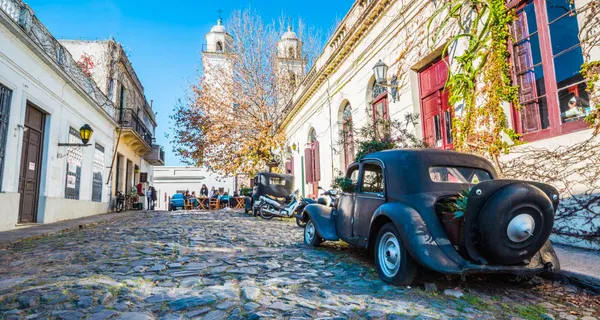On this page
Introduction to Wheelchair Accessible Colonia del Sacramento
Founded in 1680 by the Portuguese, Colonia del Sacramento is one of the oldest cities in modern day Uruguay and the site of an incredible historical narrative. Through a series of wars and treaties, control of Colonia was transferred 10 times before it became a part of Uruguay in 1828. The following chart, courtesy of Wikipedia, summarizes the fluctuating power dynamic that defines the history of Colonia del Sacramento:
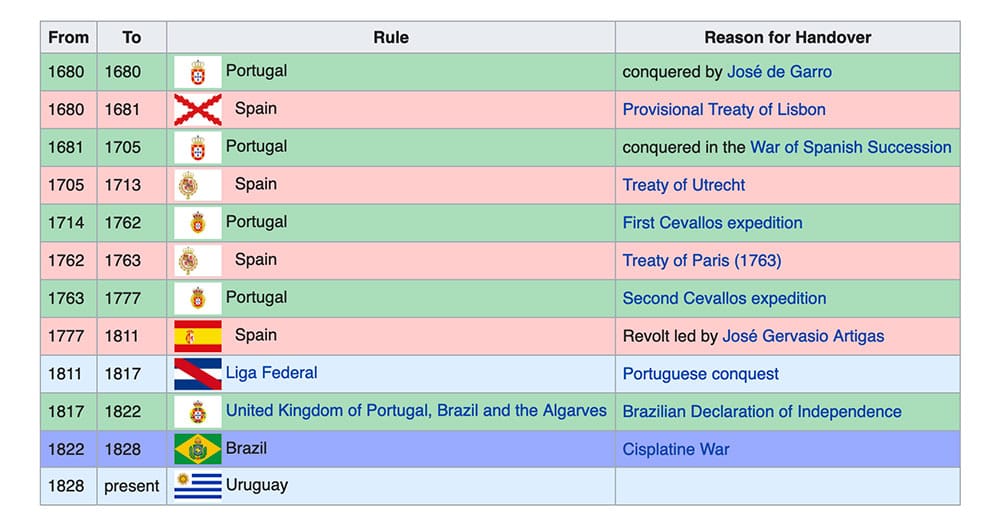
The city’s Barrio Histórico, or Historic Quarter, is recognized today as a UNESCO World Heritage Site. This recognition draws tourists from around the world who plan a day trip from the nearby cities of Buenos Aires, Argentina and Montevideo, Uruguay.
Like many other historic cities on UNESCO lists, wheelchair accessibility has taken a back seat to preservation. Wheelchair users will find it difficult to navigate the Historic Quarter’s centuries-old cobblestone streets and buildings with steps. That said, I traveled to Colonia with my wheelchair and enjoyed the opportunity to explore Uruguay’s most historic city for a day. If you are in the region, don’t pass on the opportunity to visit this historic city, even though it lacks complete access.
Attractions & Sights – Things to Do
Colonia del Sacramento can be explored in a day, and wandering may be the best way to discover the city and its historic center. Before you go, check out the city’s UNESCO listing for more historical information and context.
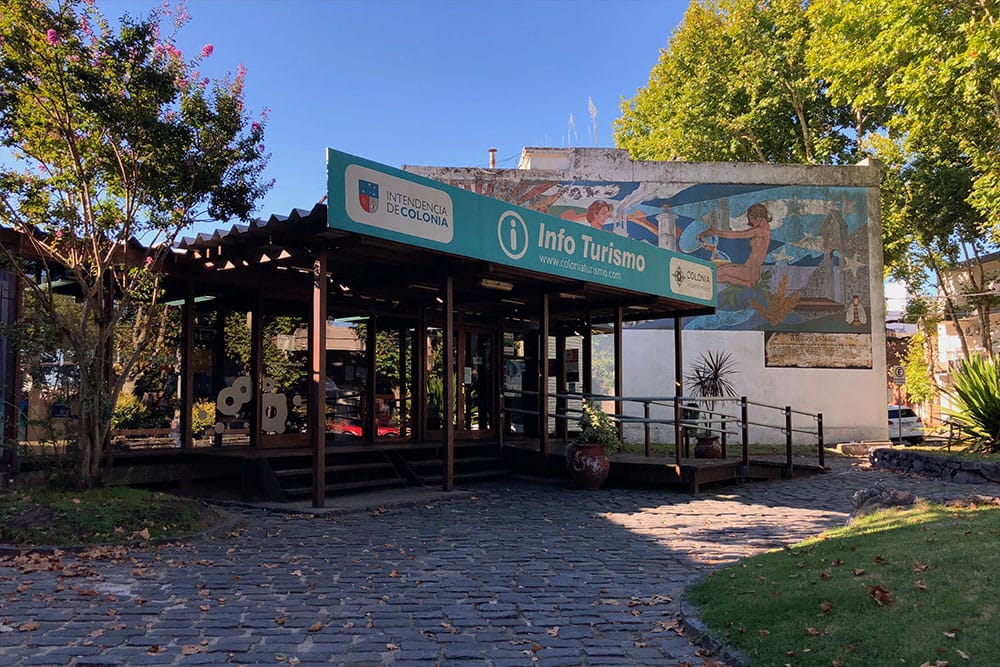
That said, resources including maps and brochures are available at the Tourist Information Center at Gral. Flores, 70000 Col Del Sacramento, Colonia, Uruguay. The staff speak a tiny bit of English.
Explore the Old Town
Colonia’s Historic Quarter is a UNESCO World Heritage Site and there is quite a lot to see. The following picture includes a map of the site, which you can use to plan your visit (click the picture to enlarge in a new window):
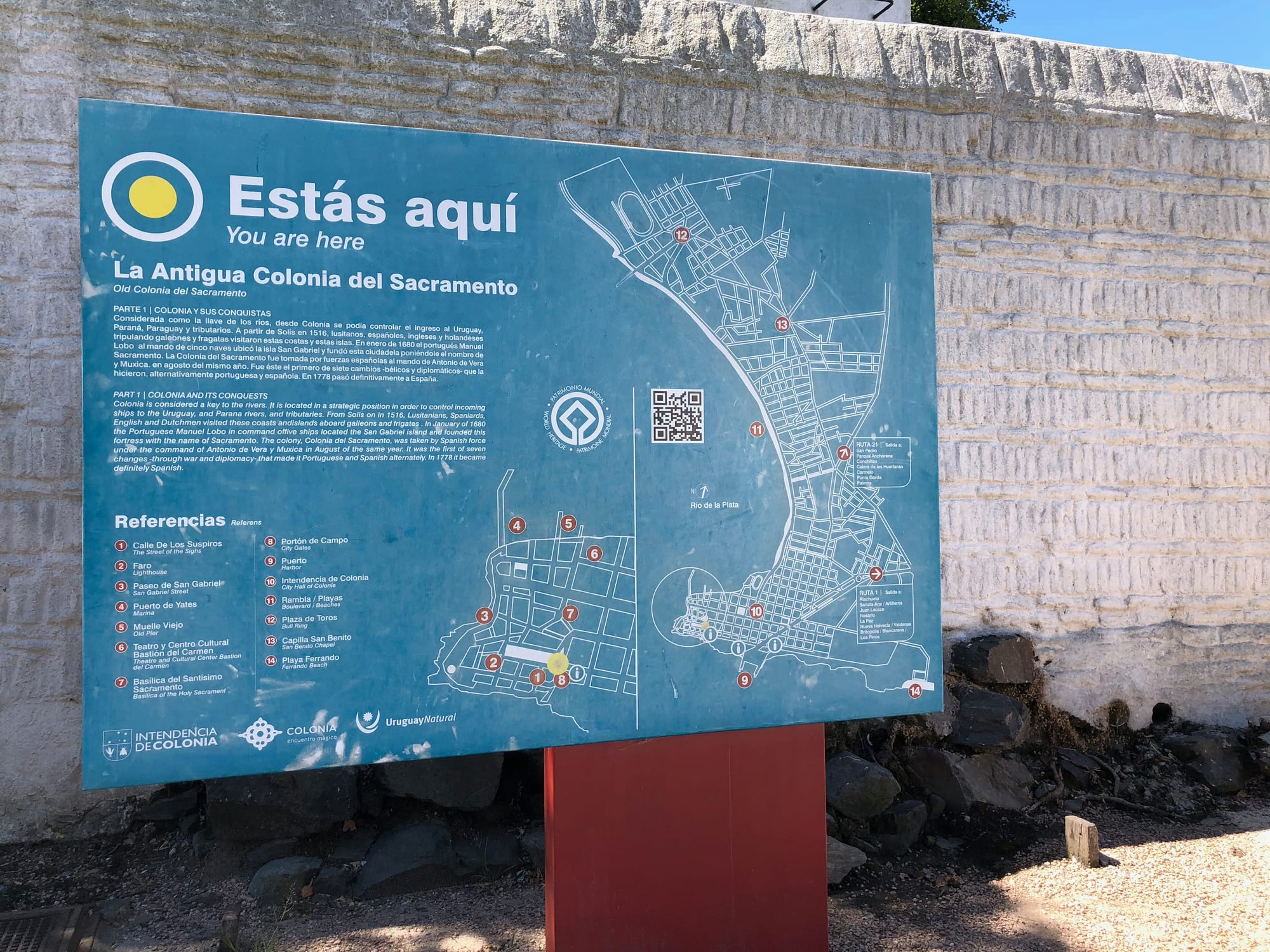
Rather than show you everything here, I’d like to highlight three things that you definitely should not miss during your tour of Colonia. The first is the Colonia del Sacramento Lighthouse, which towers above the city’s buildings and is visible from every direction — so it’s hard to miss!

The lighthouse dates to the 1850s and is a beautiful aspect of Colonia. Able-bodied visitors are able to climb to the top of the lighthouse, but it is not wheelchair accessible. Pick a place in the shade and admire it from a distance, as I did.
Next up is the Portón de Campo, the Colonia del Sacramento City Gate and Drawridge, which dates to the 18th century.
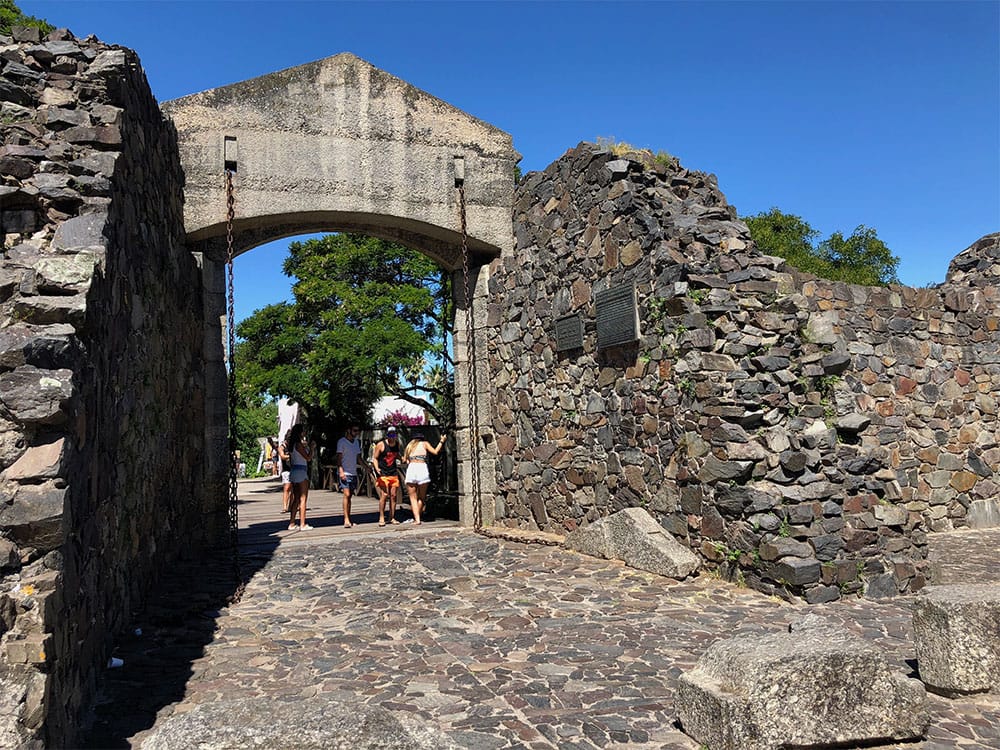
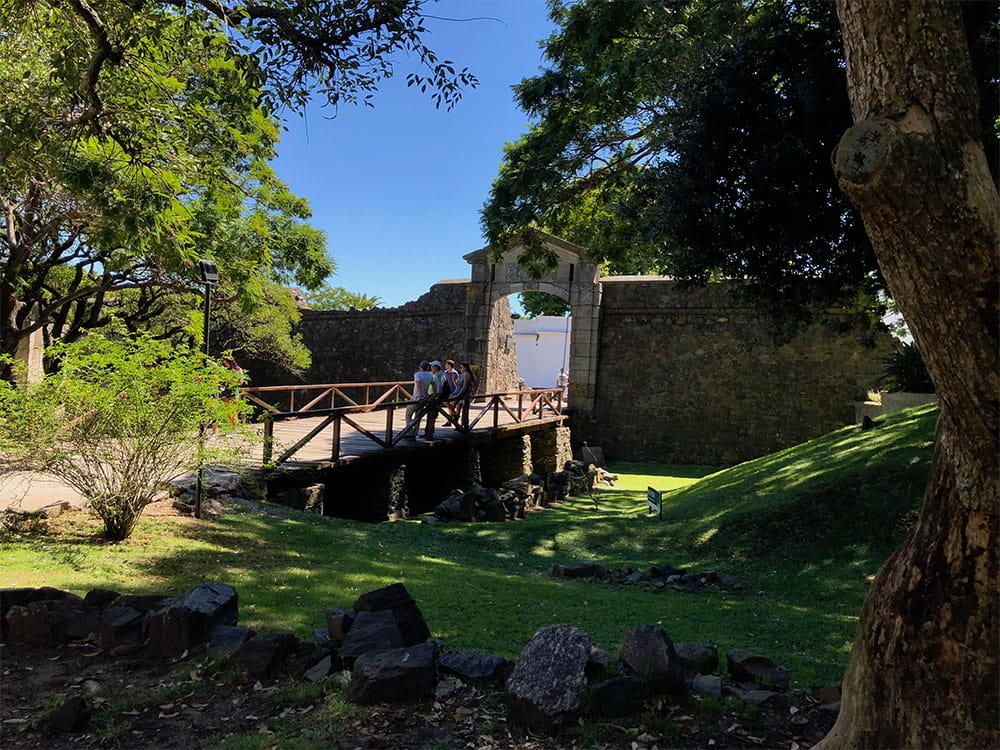
The gate and stone wall which connects to it is original. Much of the city’s fortification wall was taken down in the late-1700s, but portions of it remain to this day.
Finally, be sure to check out the Basílica del Santísimo Sacramento, a Roman Catholic church that traces its roots to the founding of the city. The present building was constructed in 1841.
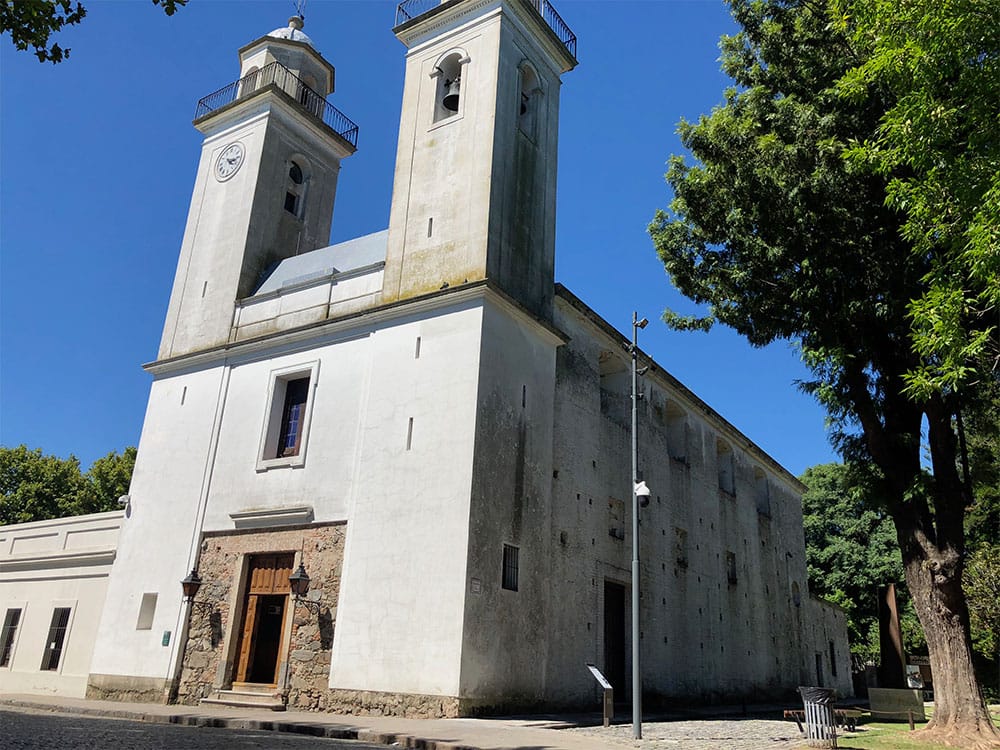
There is no curb ramp leading to the sidewalk in front of the church, and the church has three steps at its entrance, making it inaccessible to wheelchairs. As a result, I was not able to go inside. If you are a manual wheelchair user and have some people to help you get in, be sure to come back and share a picture in the comments below!
Listen to live music in Plaza Mayor
After checking out the city gate, I made my way towards the sound of music in the distance. The musical notes led me to a public square, Plaza Mayor, that sits in the midst of the Historic Quarter.
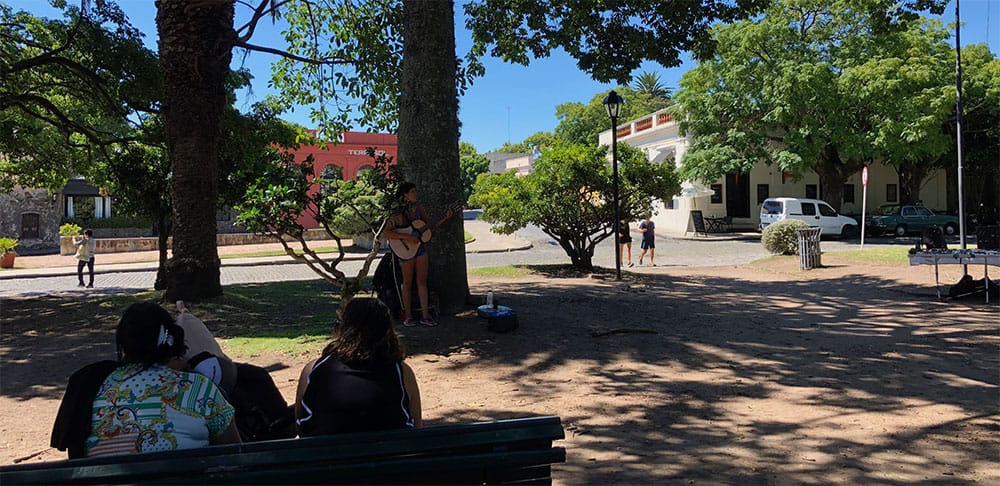
On a hot day, taking refuge under the trees of Plaza Mayor offers great relief! But what was most special about this place was the live music. I don’t speak Spanish and couldn’t understand the artist’s words, but it was a nice place to spend 15 minutes — sitting in the shade and listening to music.
Breathe the fresh air
Breathe in the fresh air? That’s not a tourist attraction!
Well, hear me out. I typically travel to big cities, surrounded by skyscrapers, cars, buses, polluted air and noise. But as I explored Colonia, I found myself in beautiful, quiet places with fresh air time after time.
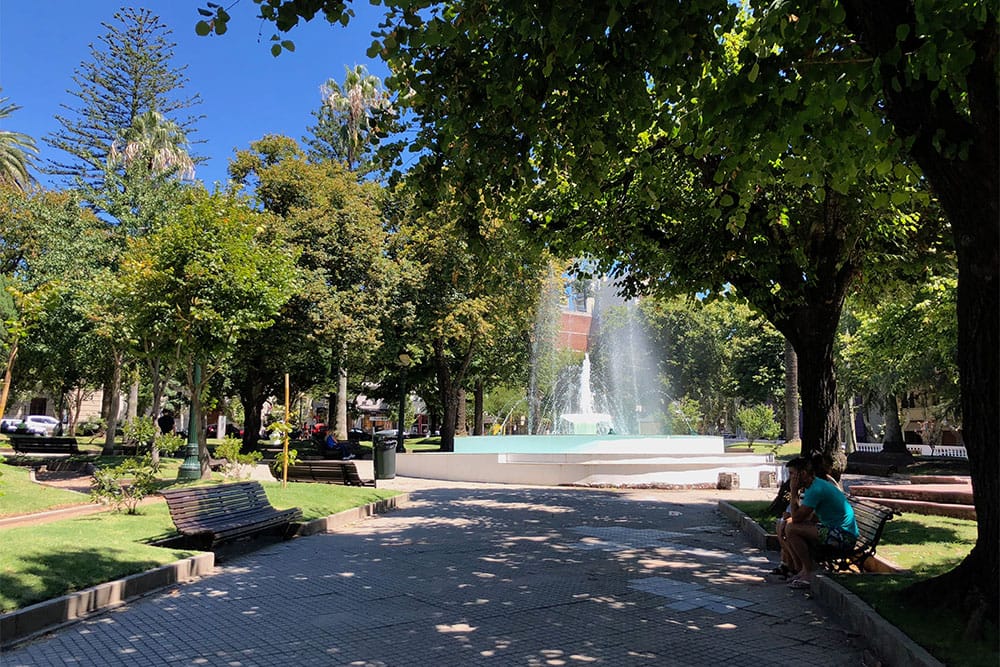
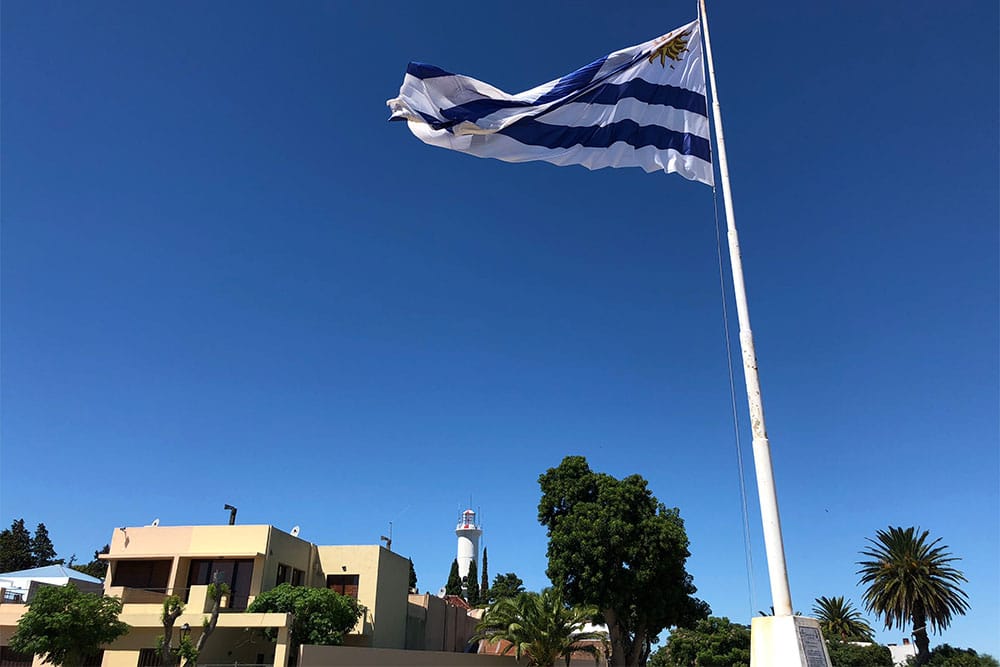
I watched a light breeze flirt with the waters of a fountain in a small public park. Later, near the Rio de la Plata shoreline, I felt the wind in my hair and watched as it pushed, pulled and tugged on the Uruguayan flag. These moments of peace, tranquility and relaxation are difficult to find in the largest cities. Colonia offered a refreshing change of pace and I encourage you to breathe it in.
Eat, drink and be merry
Despite Colonia’s small size, there is an abundance of restaurants where visitors ca grab a bite to eat. Unfortunately, few of them are wheelchair accessible.
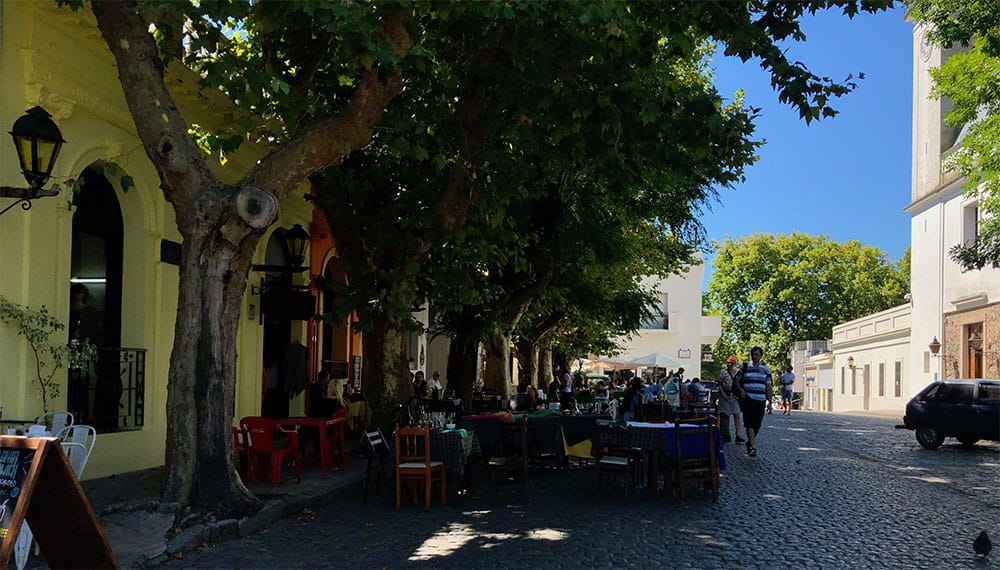
Although the restaurants were not accessible indoors, nearly all had outdoor seating with tables set out on the street or sidewalk. When I sat down to eat, I enjoyed a very affordable beer and a few drinks to go with it.
Wager your pennies
As my day in Colonia was wrapping up, I began to meander back toward the ferry terminal. I came upon a casino and decided to check it out. I had the equivalent of about $10 USD in Uruguayan Pesos, so I decided to play.
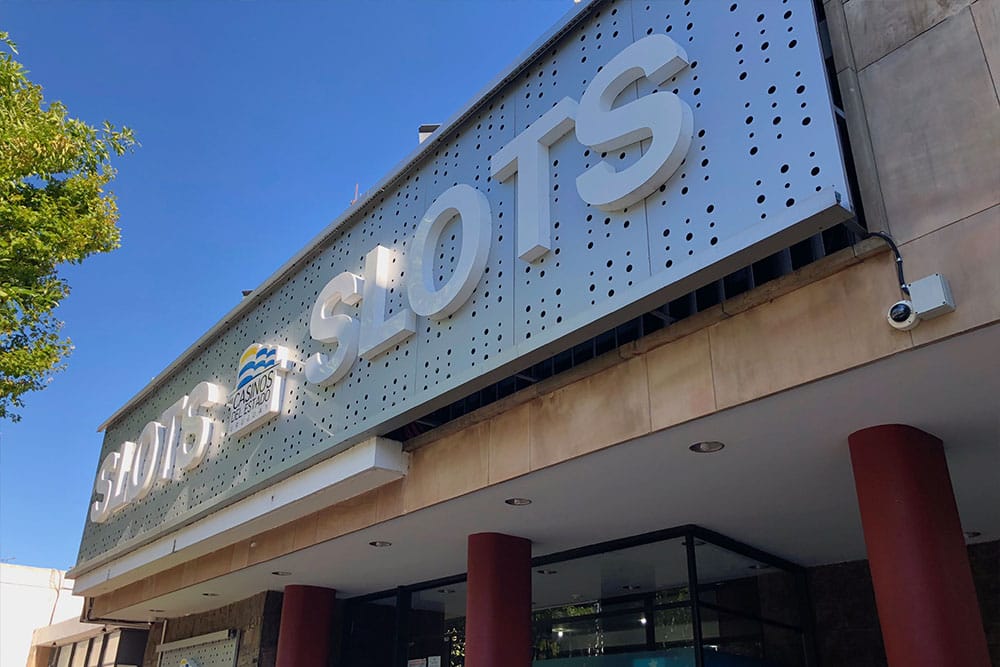
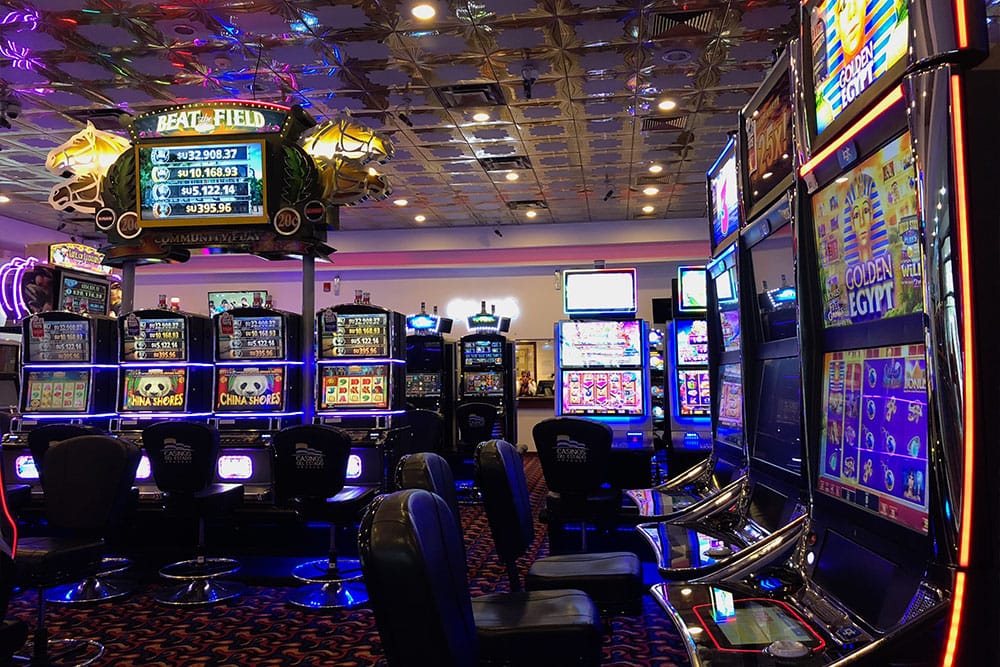
About 20 minutes later, I was up on the house by about 5x. My luck is never that good, so I cashed out. After collecting my Pesos, I utilized the casino’s wheelchair accessible bathroom. Casino Nuevo in Colonia del Sacramento, thanks for letting me win (and use your toilet)!
Sidewalk Accessibility
The sidewalks of Colonia del Sacramento are a tale of two cities, with the Old Town being wheelchair UNfriendly and the more recently developed parts having smoother pavements with curb cuts.
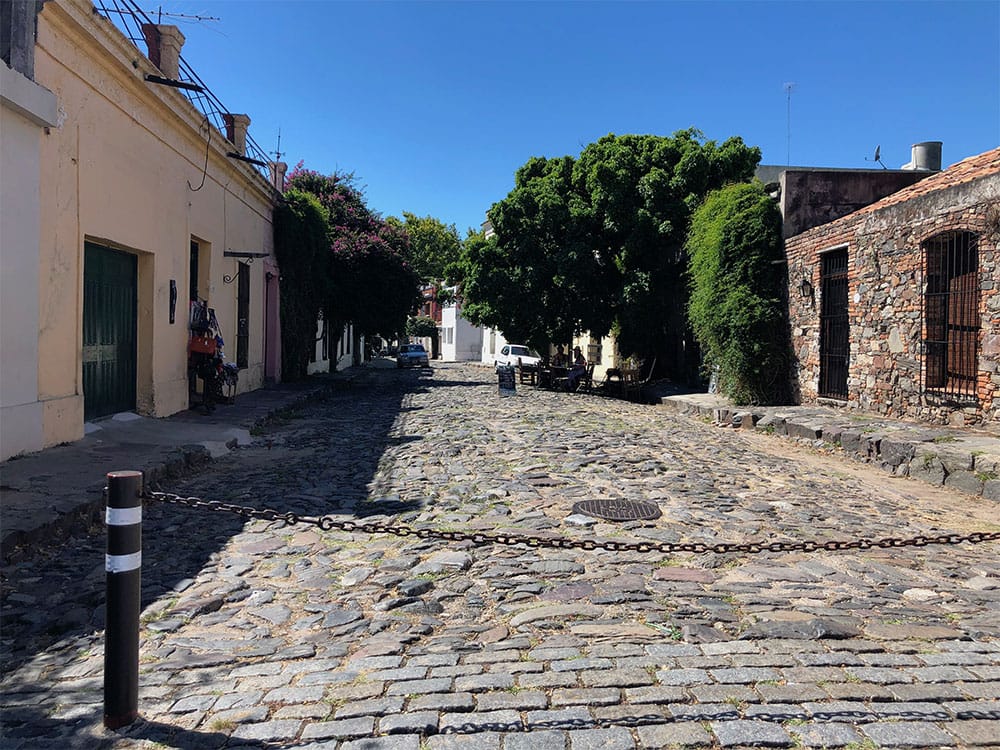
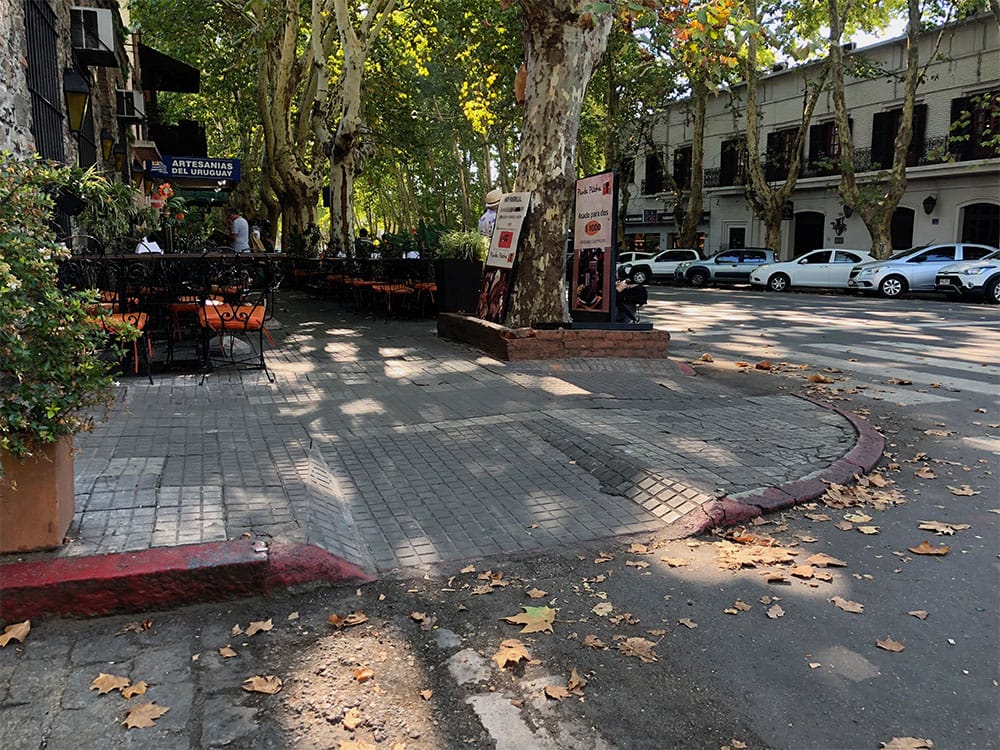
Colonia’s main attraction, the Historic Quarter, has no sidewalks. When the area was developed in the 1600s and 1700s, people and horse-drawn carriages shared the same pathways. The historic cobblestones have not aged well and the streets are, in many cases, extremely uneven and rough. A few are totally impassable by wheelchair and you’ll only be able to look up/down the street. Here are a couple of additional pictures:
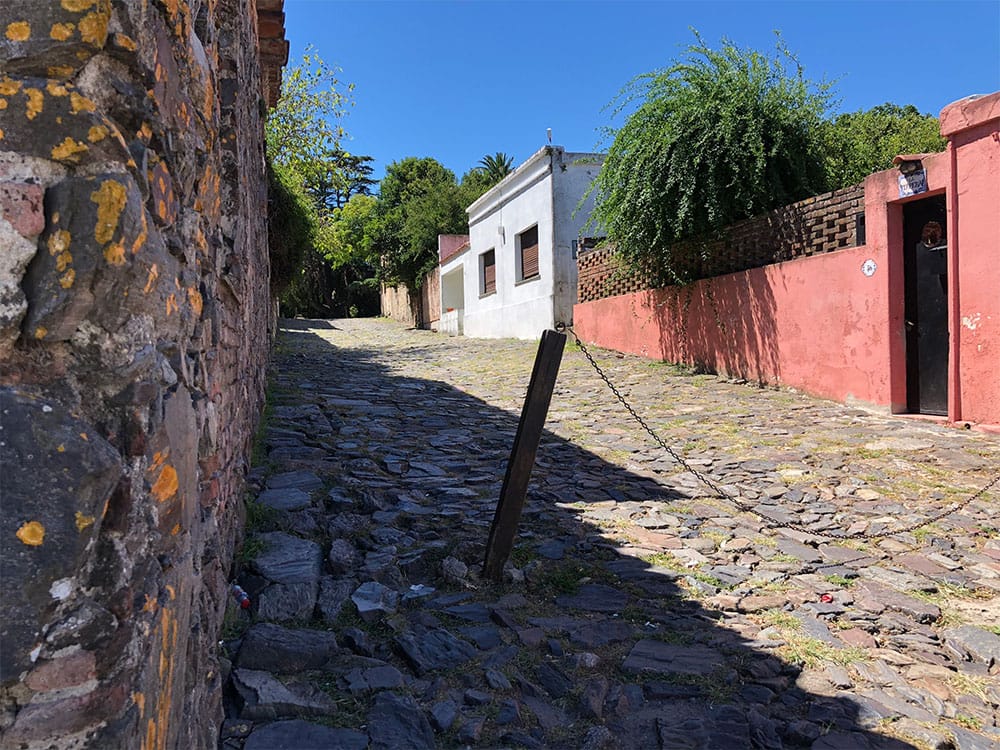
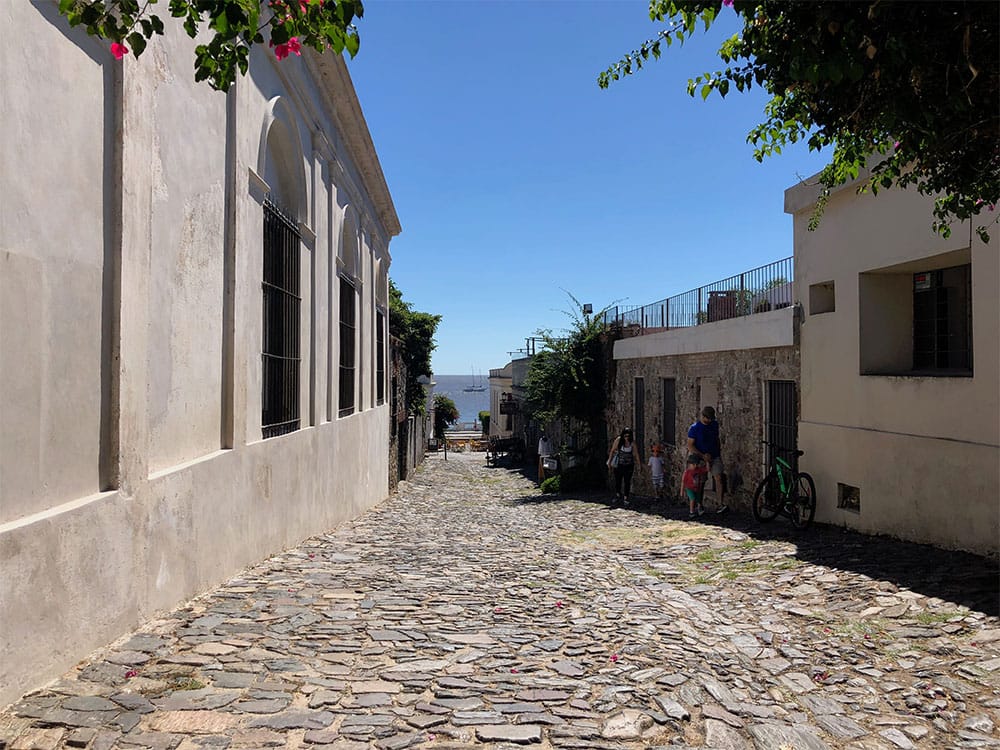
Clearly some rough terrain. But the Historic Quarter is small. You’ll find greater accessibility in other parts of the city. But you’ll still encounter broken/uneven pavements and the occasional sidewalk without a curb ramp. Here are some examples:
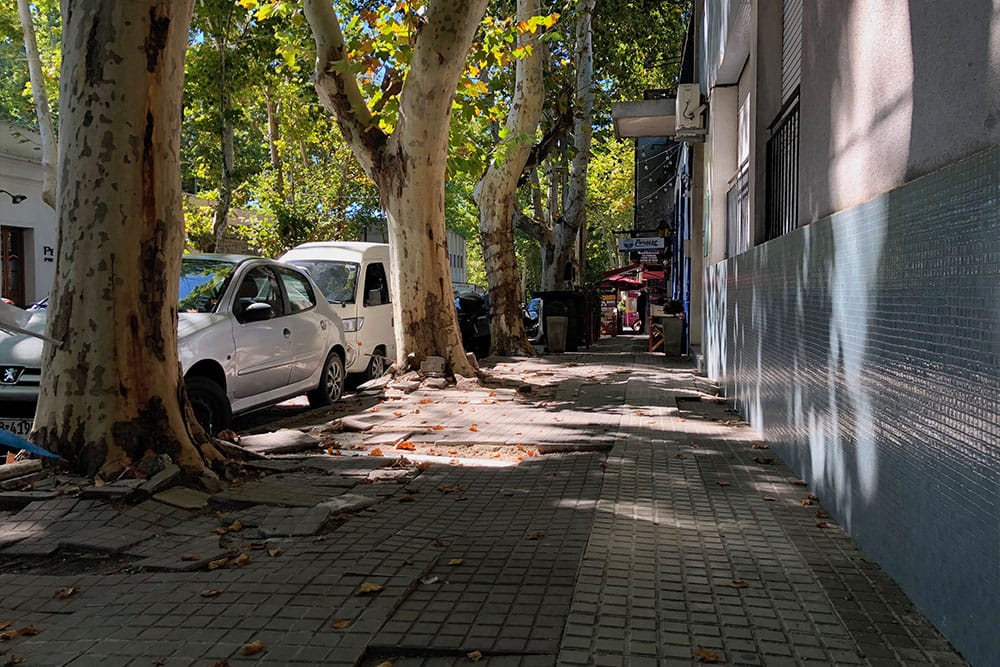

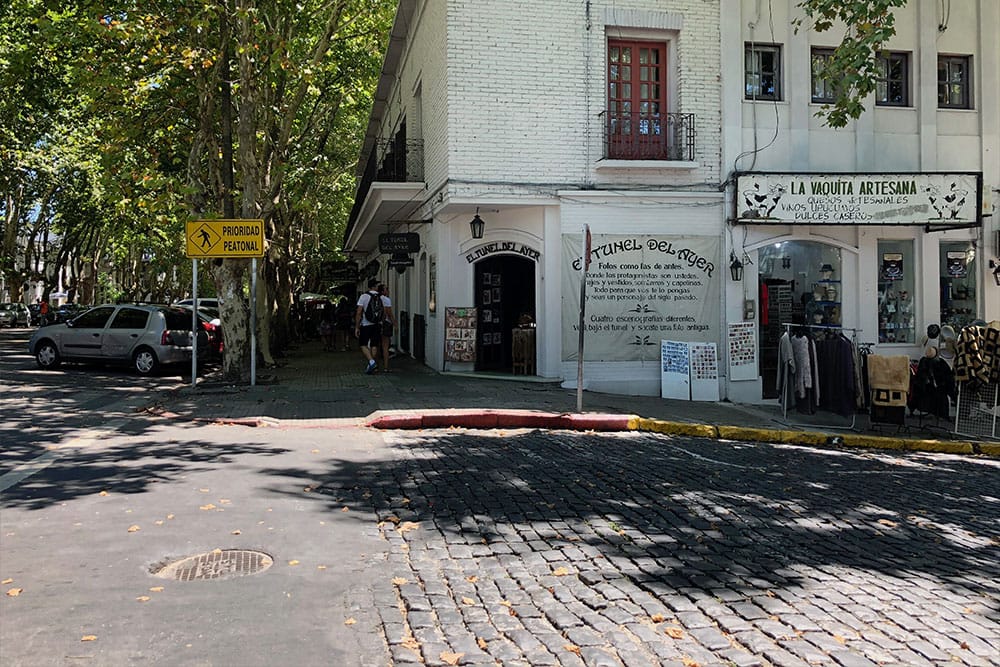
As a whole, Colonia is largely flat, but there are a few areas where the streets and sidewalks are steep. Going an extra block and circling around typically spreads out the grade, making the journey more accessible. Without a doubt, the city will present a challenge for all wheelchair users. Not every street will be accessible, but you’ll be able to forge an accessible pathway through the town. That’s part of the adventure!
Ferries & Transportation
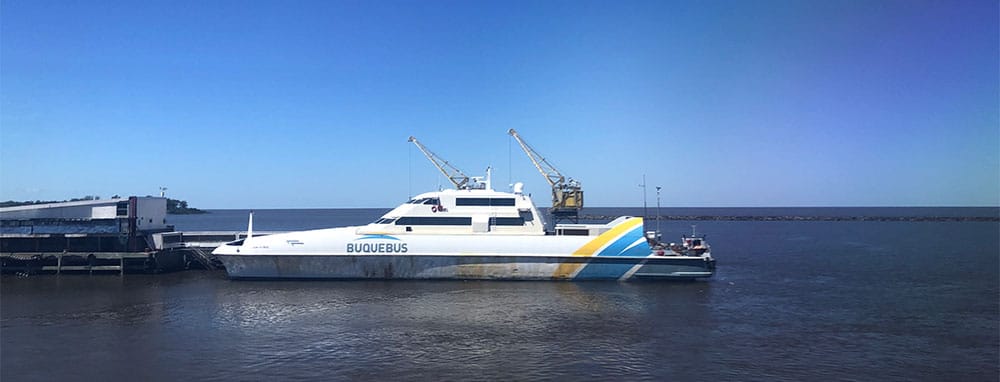
Ferry boats cross Rio de la Plata multiple times daily, connecting Colonia del Sacramento and Buenos Aires. Three ferry companies operate this service — Buquebus, Colonia Express and Seacat Colonia. Buquebus is the only one with service to downtown Buenos Aires.
I used the wheelchair accessible Buquebus ferry to take a same-day round-trip from Buenos Aires to Colonia. The total cost of a round-trip ticket purchased one day in advance was only $63 USD. To buy a Buquebus ticket, visit www.buquebus.com.

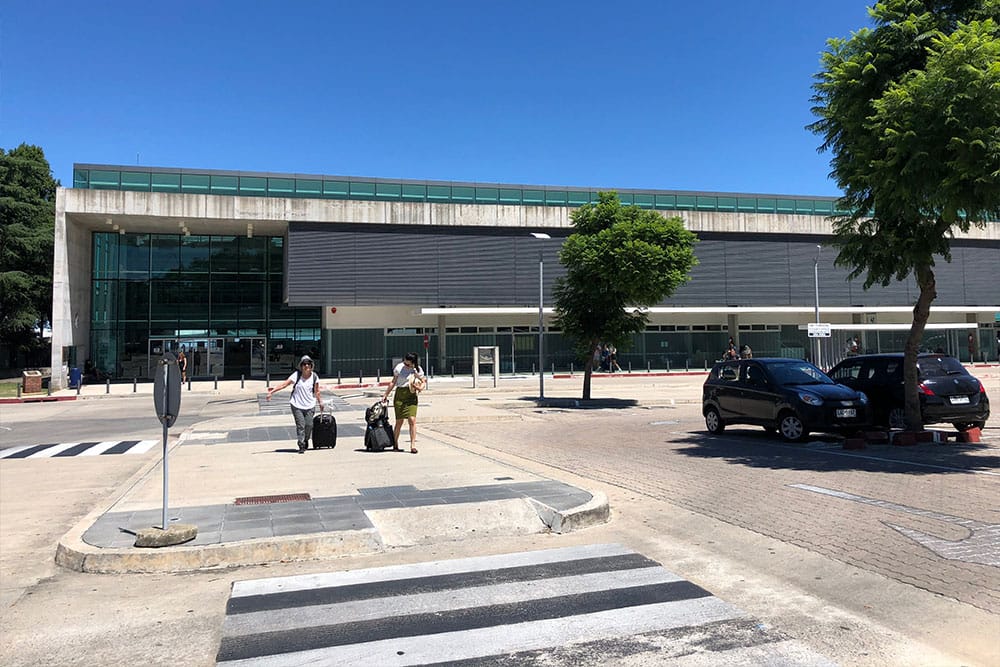
Upon arrival in Colonia, there is no passport check or security screening — you just walk out the door! You’ll pass beneath a “Welcome to Uruguay” banner and begin your exploration of the city. Note that outside the terminal, many of the sidewalks do not have curb ramps. I rode my wheelchair up a residential street for a couple of blocks until the sidewalks became accessible again. In the daylight, I felt safe.
There are no wheelchair accessible taxis with ramps in Colonia and the city bus service consists of high-floor buses with steps. If you are using a portable wheelchair, you may be able to hire one of the standard taxis or golf carts to get around. Note, however, that some areas of the Historic Quarter are closed to vehicle and golf cart traffic.
The ferry terminal in Colonia del Sacramento is modern and wheelchair accessible. Boarding of the ferry is via ramp. When you return to depart, you’ll need to collect your ticket, go through a very light security screening (I was waved through in my wheelchair) and go through passport control for Uruguay and Argentina. There are wheelchair accessible bathrooms inside the terminal and a large departures hall/waiting area with a food/drink kiosk.
Travel Visa Requirements & Safety

Under the immigration laws of Uruguay, U.S. passport holders are granted a visa exemption for stays of up to 90 days for tourism and many business activities.
Entry into Uruguay using the visa exception for United States citizens requires the following:
- A valid passport with validity for the duration of your stay.
- One blank passport visa page.
Depending on the port of entry, visitors may be required to complete an immigration arrival card when entering Uruguay, which will request personal information including your name and passport number. On my day trip to Colonia del Sacramento from Buenos Aires, Argentina, the immigration process was easy and I had my stamped entry in less than 10 minutes.
Note that at the Buenos Aires and Colonia del Sacramento ferry terminals, both countries operate a border checkpoint at both stations. This means that you will have legally departed Argentina and entered Uruguay before boarding the ferry (and vice versa). This arrangement really speeds things up.
Travel Safety & Advisories
For the most up to date and detailed information on the safety of travel to Uruguay, read the country report authored and released by the United States Department of State at www.travel.state.gov.
Resources in an Emergency
If you encounter a medical emergency or are a victim of a crime in Colonia del Sacramento, contact the local authorities immediately. Although 9-1-1 is the emergency number in the United States, that is not true in the majority of other countries. Read the What Number Do I Call To Reach Police, Fire or Ambulance Services In Other Countries? article for more information.
The U.S. Embassy in Montevideo, Uruguay can also be a resource to Americans. It is located at:
Lauro Muller 1776
Montevideo 11200
Uruguay
Contact information is listed below:
Phone: +598 1770-2000
Phone (24-hours/Emergency): +598 1770-2000
E-mail: MontevideoACS@state.gov
Website: https://uy.usembassy.gov/
Please note that there is no U.S. Embassy in Colonia del Sacramento. The U.S. Embassy in Montevideo is approximately 2 hours away by car.

